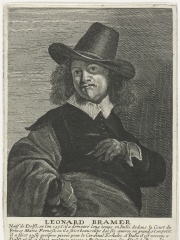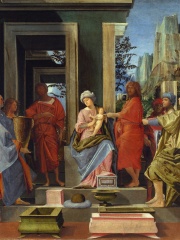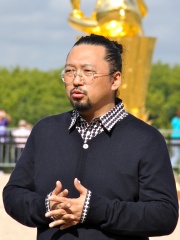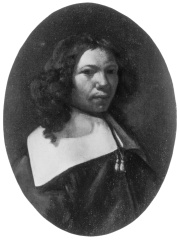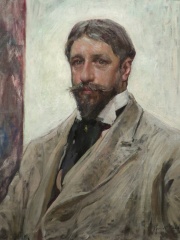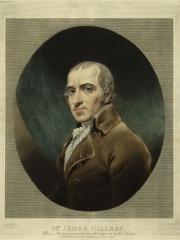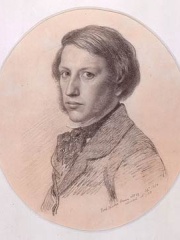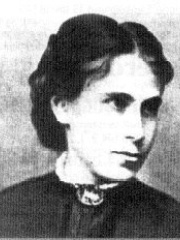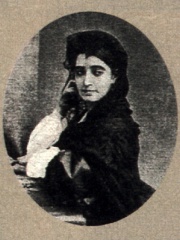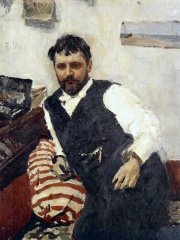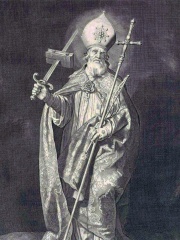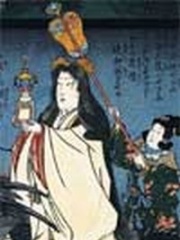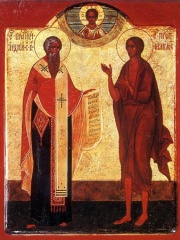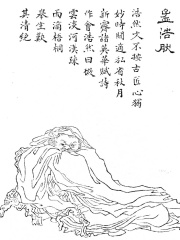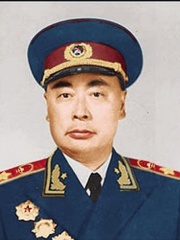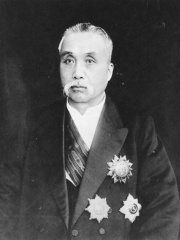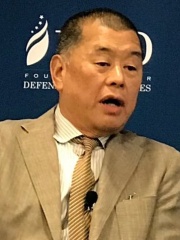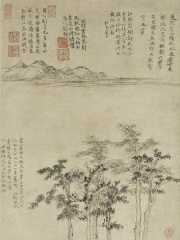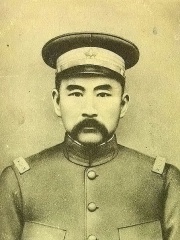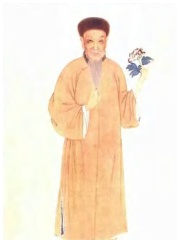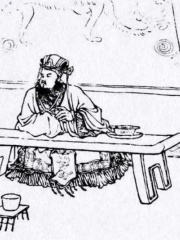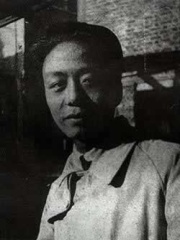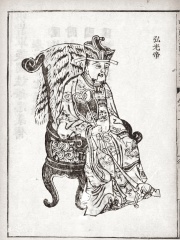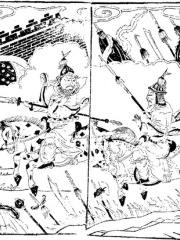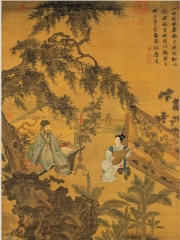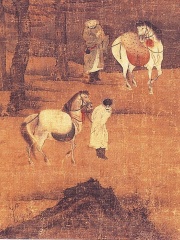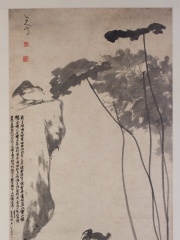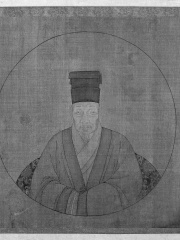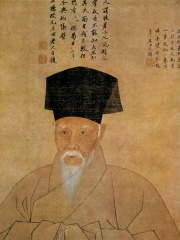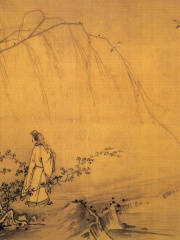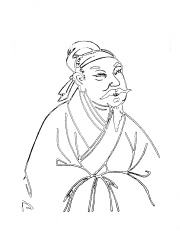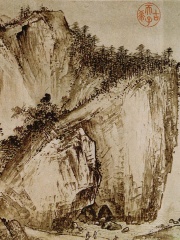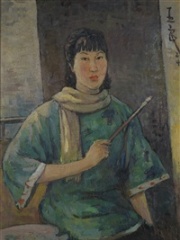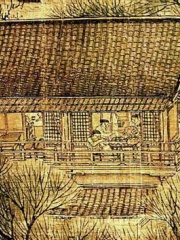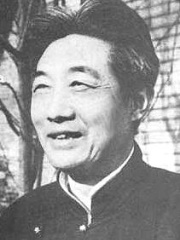PAINTER
Wu Daozi
680 - 740
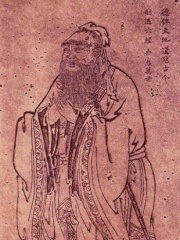
 Wu Daozi
Wu Daozi
Wu Daozi (c. 685 – c. 758 CE or c. 689 – c. 759 CE), also known as Daoxuan and Wu Tao Tzu, was a Chinese painter of the Tang dynasty. The British art historian Michael Sullivan considers him one of "the masters of the seventh century." In China, his paintings are believed to mark the peak of court painting. None of his works survive, however later surviving copies are based on his original drawings. Wu's father died when he was at an early age, and he subsequently lived in poverty. Read more on Wikipedia
His biography is available in 16 different languages on Wikipedia. Wu Daozi is the 819th most popular painter (down from 711th in 2024), the 570th most popular biography from China (down from 531st in 2019) and the 14th most popular Chinese Painter.
Memorability Metrics
Page views of Wu Daozi by language
Among PAINTERS
Among painters, Wu Daozi ranks 819 out of 2,023. Before him are Leonaert Bramer, Bramantino, Takashi Murakami, Gerrit Berckheyde, Wols, and Robert Reid. After him are James Gillray, Henri Gervex, Ford Madox Brown, Tina Blau, Marie Bracquemond, and Konstantin Korovin.
Most Popular Painters in Wikipedia
Go to all RankingsLeonaert Bramer
1596 - 1674
HPI: 62.76
Rank: 813
Bramantino
1465 - 1530
HPI: 62.75
Rank: 814
Takashi Murakami
1962 - Present
HPI: 62.75
Rank: 815
Gerrit Berckheyde
1638 - 1698
HPI: 62.75
Rank: 816
Wols
1913 - 1951
HPI: 62.74
Rank: 817
Robert Reid
1862 - 1929
HPI: 62.74
Rank: 818
Wu Daozi
680 - 740
HPI: 62.74
Rank: 819
James Gillray
1756 - 1815
HPI: 62.73
Rank: 820
Henri Gervex
1852 - 1929
HPI: 62.73
Rank: 821
Ford Madox Brown
1821 - 1893
HPI: 62.72
Rank: 822
Tina Blau
1845 - 1916
HPI: 62.71
Rank: 823
Marie Bracquemond
1840 - 1916
HPI: 62.71
Rank: 824
Konstantin Korovin
1861 - 1939
HPI: 62.69
Rank: 825
Contemporaries
Among people born in 680, Wu Daozi ranks 4. Before him are Saint Boniface, Mus‘ab ibn 'Umair, and Empress Genshō. After him are Liutpert, and Aripert II. Among people deceased in 740, Wu Daozi ranks 4. Before him are Zayd ibn Ali, Andrew of Crete, and Meng Haoran. After him is Æthelheard of Wessex.
Others Born in 680
Go to all RankingsSaint Boniface
RELIGIOUS FIGURE
680 - 754
HPI: 77.14
Rank: 1
Mus‘ab ibn 'Umair
RELIGIOUS FIGURE
680 - 625
HPI: 72.06
Rank: 2
Empress Genshō
POLITICIAN
680 - 748
HPI: 69.03
Rank: 3
Wu Daozi
PAINTER
680 - 740
HPI: 62.74
Rank: 4
Liutpert
POLITICIAN
680 - 702
HPI: 62.54
Rank: 5
Aripert II
POLITICIAN
680 - 712
HPI: 62.52
Rank: 6
Others Deceased in 740
Go to all RankingsZayd ibn Ali
RELIGIOUS FIGURE
695 - 740
HPI: 70.38
Rank: 1
Andrew of Crete
WRITER
660 - 740
HPI: 68.16
Rank: 2
Meng Haoran
WRITER
690 - 740
HPI: 66.67
Rank: 3
Wu Daozi
PAINTER
680 - 740
HPI: 62.74
Rank: 4
Æthelheard of Wessex
POLITICIAN
750 - 740
HPI: 58.25
Rank: 5
In China
Among people born in China, Wu Daozi ranks 570 out of 1,610. Before him are Chen Yi (1901), Xu Shichang (1855), Jimmy Lai (1948), Ni Zan (1301), Lu Ji (261), and Zhang Xun (1854). After him are Li Shangyin (813), Yuan Mei (1716), Helü of Wu (-550), Ai Qing (1910), Zhu Yousong (1607), and Li Jue (200).
Others born in China
Go to all RankingsChen Yi
POLITICIAN
1901 - 1972
HPI: 62.83
Rank: 564
Xu Shichang
POLITICIAN
1855 - 1939
HPI: 62.82
Rank: 565
Jimmy Lai
BUSINESSPERSON
1948 - Present
HPI: 62.79
Rank: 566
Ni Zan
PAINTER
1301 - 1374
HPI: 62.79
Rank: 567
Lu Ji
WRITER
261 - 303
HPI: 62.77
Rank: 568
Zhang Xun
POLITICIAN
1854 - 1923
HPI: 62.77
Rank: 569
Wu Daozi
PAINTER
680 - 740
HPI: 62.74
Rank: 570
Li Shangyin
WRITER
813 - 858
HPI: 62.73
Rank: 571
Yuan Mei
WRITER
1716 - 1798
HPI: 62.71
Rank: 572
Helü of Wu
POLITICIAN
550 BC - 496 BC
HPI: 62.70
Rank: 573
Ai Qing
WRITER
1910 - 1996
HPI: 62.67
Rank: 574
Zhu Yousong
POLITICIAN
1607 - 1646
HPI: 62.66
Rank: 575
Li Jue
POLITICIAN
200 - Present
HPI: 62.66
Rank: 576
Among PAINTERS In China
Among painters born in China, Wu Daozi ranks 14. Before him are Tang Yin (1470), Liang Kai (1200), Bada Shanren (1626), Wen Zhengming (1470), Shen Zhou (1427), and Ni Zan (1301). After him are Ma Yuan (1160), Huang Tingjian (1045), Xia Gui (1195), Pan Yuliang (1895), Zhang Zeduan (1085), and Xu Beihong (1895).
Tang Yin
1470 - 1524
HPI: 63.33
Rank: 8
Liang Kai
1200 - 1300
HPI: 63.31
Rank: 9
Bada Shanren
1626 - 1705
HPI: 63.17
Rank: 10
Wen Zhengming
1470 - 1559
HPI: 63.11
Rank: 11
Shen Zhou
1427 - 1509
HPI: 63.08
Rank: 12
Ni Zan
1301 - 1374
HPI: 62.79
Rank: 13
Wu Daozi
680 - 740
HPI: 62.74
Rank: 14
Ma Yuan
1160 - 1225
HPI: 62.13
Rank: 15
Huang Tingjian
1045 - 1105
HPI: 62.11
Rank: 16
Xia Gui
1195 - 1224
HPI: 61.74
Rank: 17
Pan Yuliang
1895 - 1977
HPI: 61.68
Rank: 18
Zhang Zeduan
1085 - 1145
HPI: 61.59
Rank: 19
Xu Beihong
1895 - 1953
HPI: 61.17
Rank: 20
